
The right location has a significant influence on the later development of indoor and garden plants. For many, drafts or the wind factor existential. But there are species that both don't mind. These 21 plants tolerate drafts.
In a nutshell
- Drafts are not problematic for all houseplants
- prefer wind-resistant plants in the garden
- The size of the leaves is often decisive
- flexible species with small leaves or needles are optimal
contents
- Indoor plants that tolerate drafts
- Garden plants that tolerate drafts
- frequently asked Questions
Indoor plants that tolerate drafts
bow hemp (Sansevieria)
This species-rich leaf ornamental plant impresses with different leaf colors and shapes and properties that improve the indoor climate.

- Growth form: upright succulent between 20 and 150 cm high
- heyday: May to June
- multi-flowered, fragrant panicles
- bright locations, no direct sun
A notice: All sansevierias are slightly poisonous.
Triangular Spurge (Euphorbia trigona)
Their bizarre growth habit makes these fast growing and easy to care for succulent particularly.

- Growth form: columnar, compact, triangular, thorny shoots, up to 100 cm
- rarely blooms as a houseplant
- small white or yellowish individual flowers
- bright, warm location, substrate with a high mineral content
Danger: The white milky sap inside the plant can cause skin irritation on contact.
window leaf (Monstera)
Characteristic of the window leaf are the heart-shaped, up to 100 cm large, conspicuously slit leaves. Special highlights are species with variegated leaves.

- Growth form: herbaceous climbing plant with creeping shoots, 50 to 300 cm high
- Flowering period: September to October, rarely kept indoors
- white bract with a cylindrical spadix
- bright, not sunny location
A notice: The Monstera is in all parts poisonous.
money tree (Crassula ovata)
With its fleshy leaves, the money tree is a succulent that can develop into a small tree after a few years.

- Growth habit: bizarre, upright habit, 50 to 100 cm high
- Flowering time: February to April
- small, slightly fragrant flower panicles
- nutrient-rich, neutral to slightly acidic soil
Tip: Succulents and cacti are plants that are opposed to drafts generally insensitive are.
lucky feather (Zamioculcas)
Its strong, fleshy fronds make this attractive plant a real eye-catcher, which can also improve the air quality in the room.

- Growth habit: upright, forming runners, 40 to 60 cm high
- Flowers: mid-summer to autumn, rather rare
- spadix-shaped white inflorescence
- shady to shady, moderately dry
Spider plant (Chlorophytum comosum)
It lets us breathe fresh air, is decorative and requires little maintenance. Its long, narrow, green or green-white leaves can grow up to 45 cm long.

- Growth habit: persistent, herbaceous up to 60 cm high
- Flowering possible all year round
- long overhanging inflorescences, small white individual flowers
- bright places without direct sunlight
- green-leaved species also tolerate shade
Rubber tree (Ficus elastica)
It is a classic among indoor plants and is valued primarily for its sturdy, dark green leaves.

- Growth habit: upright, sprawling small tree, 50 to 300 cm
- no flowering
- shady to semi-shady Location
- a little more light for variegated varieties
A notice: The rubber tree is considered slightly poisonous.
cobbler palm (Aspidistra elatior)
It is the perfect beginner plant because it forgives some care mistakes. Even temperature fluctuations and drafts cannot harm it.

- Growth form: herbaceous growth, no trunk, up to 70 cm high
- Flowering time from autumn to winter
- slightly purple flowers, mostly hidden by leaves
- semi-shady to shady locations, no direct sun
radiate aralie (Schefflera arboricola)
This robust plant also attracts attention with its radiating, partly variegated leaves. It also ensures good air, but is considered poisonous.
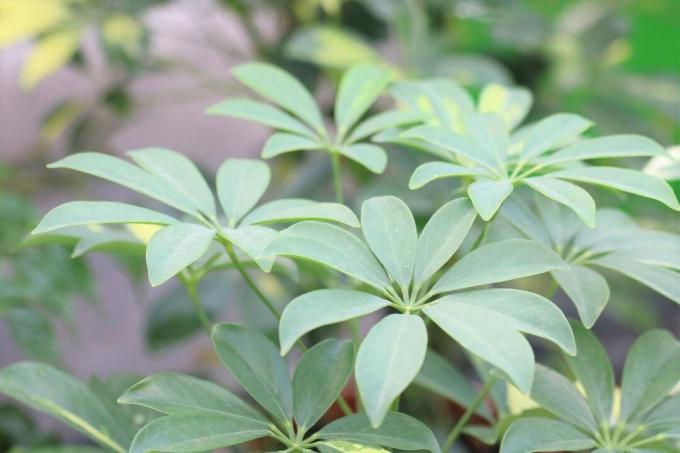
- Growth habit: upright, tree-like, up to 200 cm high
- flowers extremely rarely indoors
- green-yellow flower spikes
- year-round warm, light to semi-shady locations
ufo plant (Pilea peperomioides)
The main focus here is on the flying saucer-like leaves. The white dot in the middle also earned it the name belly button plant.

- Growth habit: loose, upright, forming runners, 30 to 40 cm high
- Flowering period: May-June
- green-white flower spikes
- shady to semi-shady, sensitive to lime
Garden plants that tolerate drafts
Burnet rose (Rosa pimpinellifolia)
This wild beauty scores with robustness and an early and rich flowering. In addition it provides plenty of food for numerous insects.

- Growth habit: upright, overhanging small shrub, forms runners, 50 to 200 cm
- Flowering time in May
- single, white, pleasantly scented bowl-shaped flowers
- sunny positions, moderately dry to moderately moist soil
Chinese reed (Miscanthus sinensis)
Its fine flower spikes and impressive growth make Chinese reed a real eye-catcher even in particularly windy locations.

- Growth habit: upright, arching, overhanging or cascading, 40 to 350 cm
- Flowering period: between August and October
- fine silvery-white to silvery-pink flower panicles
- sunny location, high space requirement
real sage (Salvia officinalis)
It is one of the oldest and best-known medicinal and aromatic herbs and should not be missing in any garden.
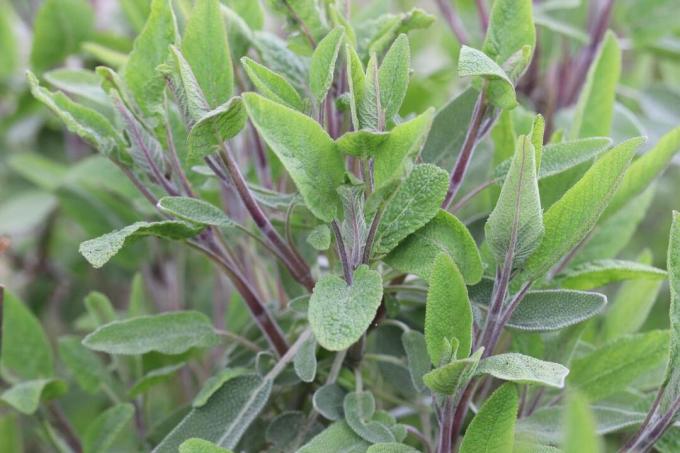
- Growth habit: upright, clump-forming, bushy perennial, up to 80 cm
- heyday: May to July
- violet pseudo-spikes, edible
- sunny, rocky to loamy locations, likes lime
lilac (Syringa vulgaris)
Lilacs enchant above all with their magnificent and intensely fragrant flowers, an ornament for every garden.
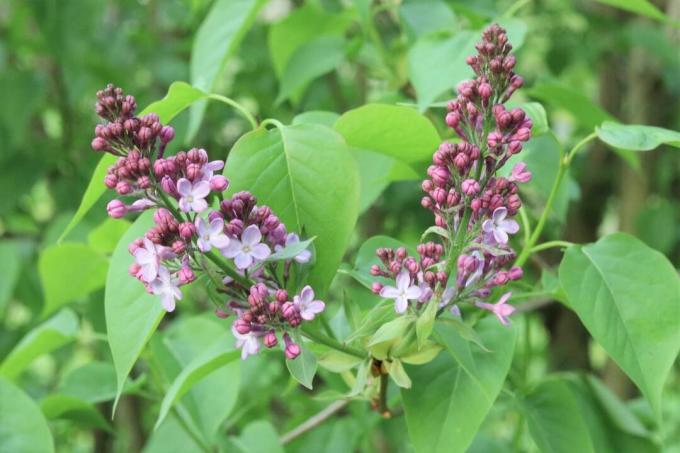
- Growth form: sprawling, runner-forming large shrub up to 600 cm
- Flowering period: May to June
- white or violet flower spikes
- for sunny to shady areas
Spring Tamarisk (Tamarix parviflora)
Thanks to its graceful flowers and leaves, drafts do not harm the plant very much. In early summer it is adorned with a sea of countless flowers.

- Growth habit: upright, overhanging large shrub, up to 500 cm
- Flowering period: May to June
- long pink flower clusters
- sunny places, likes lime
Thrift (Armeria)
The thrift is also wind and weatherproof and with its bright flower balls an enrichment for every rock and heather garden.

- Growth form: cushion-forming perennial, 10 to 40 cm high
- Flowering period: May to September
- white or pink hemispherical flower heads
- sunny, dry locations
Dogwood (Cornus)
With its flexible shoots, it does well in drafty locations and also offers beautiful flowers, bright autumn colors and decorative fruits.

- Growth form: herbaceous shrubs or small trees up to 600 cm
- Flowering time: April to July, variety dependent
- spherical inflorescences, white, pink or red bracts
- sheltered, light-shady, humid locations
Tip: The autumn color of the leaves ranges from bright yellow to scarlet depending on the light intensity.
Pennisetum grass (Pennisetum alopecuroides)
Its fine stalks and feathery inflorescences are the adornment of these grasses, which are hardly vulnerable even to strong winds.
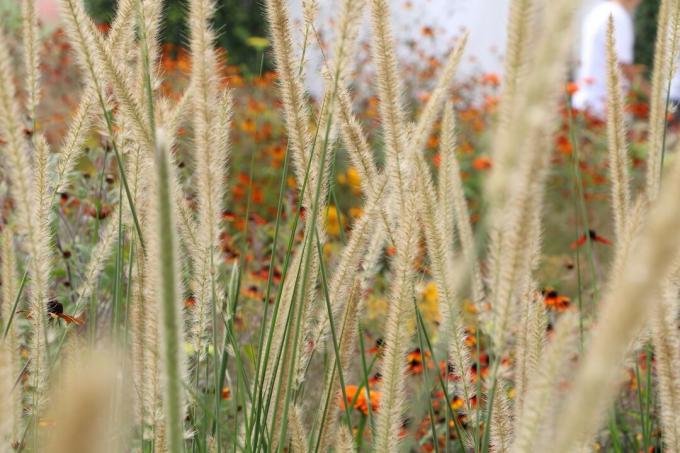
- Growth habit: overhanging, clump-forming, 30 to 150 cm
- Flowering period: August-October
- delicate flower spikes in white, pink or brown
- sunny locations, loamy or sandy soil
lavender (Lavandula angustifolia)
With its bright flowers and needle-like, gray felty foliage, lavender brings a touch of Mediterranean flair to the garden.
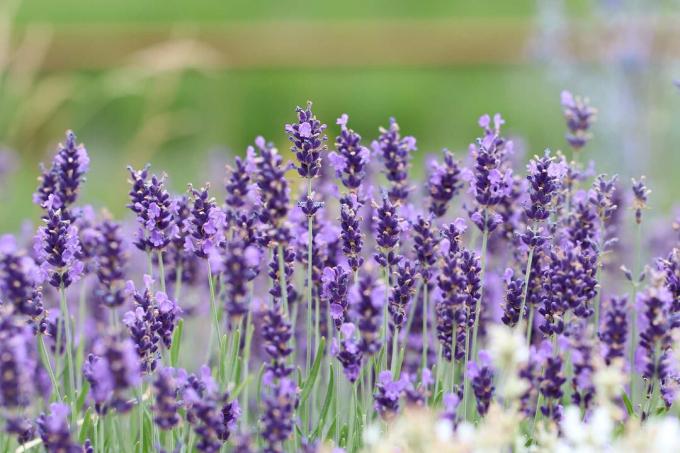
- Growth form: compact, woody subshrub up to 40 cm
- heyday: July to September
- violet, spike-shaped, intensively scented flowers
- full sun, dry, calcareous soils
rosemary (Salvia rosmarinus)
Its needle-like, aromatically fragrant leaves are an integral part of Mediterranean cuisine, both fresh and dried.

- Growth form: upright, evergreen semi-shrub, up to 200 cm
- Flowering time: March to April
- tubular lavender blue or whitish lipped flowers
- sunny, warm and sheltered Locations
Gypsophila (Gypsophila)
With its almost floating clouds of flowers, the gypsophila brings lightness to the garden and serves as a pretty accessory in larger flower arrangements.

- Growth habit: upright, cushion-forming, 50 to 120 cm, depending on the variety
- Flowering period: June to September
- countless small, pink or white individual flowers
- Sunny location, stony to loamy soil, likes lime
frequently asked Questions
They are often naturally better adapted to drafts and strong winds. Many even serve as windbreaks. Age and characteristics of these plants as well as soil structure and surrounding plants also play a role in wind resistance.
The most common causes of drafts are leaky windows and doors, but also other weak points in the building envelope, which create cold air currents. These need to be eliminated or to seal. Of course, every time you air the room, there is a draft.
As a rule, they are robust enough to withstand draughts. Nevertheless, it can become critical on the windowsill, especially in winter, if the differences between outside and inside temperature are too great when airing. Because then there is also a risk of frostbite with these species.



